Photos
Found
in the Camera
taken from a German
soldier in Italy
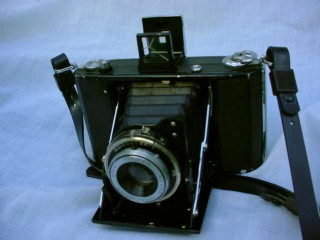
| CusterMen MENU: | Italian Campaign | At The Front | Books | Armies | Maps | 85th Division | GI Biographies | Websites |
| German Photos Found
in the Camera |
 |
| Sgt. Cole obtained his camera from a wounded German near Formia, on May 15, 1944 . These three photos shown below were on the roll of film that was still in the camera. The photos are of a German corporal and his friends -- not too different from the of photos taken by Sgt. Cole and his buddies using the very same camera. |
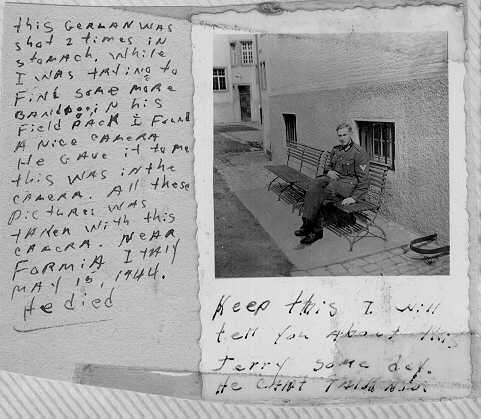 This photo
of a German sitting on a bench was mailed home to his wife with a caption under the photo which reads: |
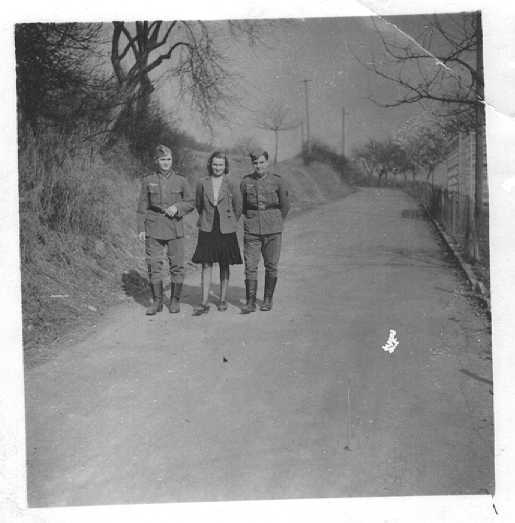 Another photo of 2 German soliders and a woman taking a stroll. The soldier on the right appears to have a corporal's rank but it could be a specialty badge, such as radio operator. |

A German sergeant converses with a private outside of a |
Comments about
the Photos
The soldiers in these photos are wearing Army uniforms(as
opposed to other services). It appears to me that the same blond
soldier is in all three photos, however, since the blond in one photo
is wearing corporal's chevron rank that would suggest two different
soldiers. The soldier wearing the visor cap is a Non-Commissioned
Officer (i.e., sergeant) as distinguished by his collar and epaulets
edged in white.
Dad told a story about a sniper that shot at them and killed an artillerymen (or was it an infantryman). He said that when the sniper was captured, someone shot the German in the stomach out of retaliation. I don't know if that story relates to the same German that Dad stated "gave me the camera" or not---he never went into alot of detail about this. Also, Dad says he obtained the camera at Formia on May 15, 1944. This is not necessarily where the photos were taken.
Among the items that
Dad brought home from the war was a German Police helmet, two pistols*,
a Nazi banner, and a pair of German field binoculars (not really strong
enough for artillery observation). I always presumed that these
items came from the same German who gave him the camera.
The German in the photo seems to be wearing a coat with a darker collar
--some Police units wore black or dark green collars. So, it is possible
that the helmet and the binoculars came from the same German that the
camera did.
See photo of helmet, below.
Also, a sniper would most likely have a pair of binoculars. But I wouldn't think a military Police would be used as a sniper(Dad could have been using term "sniper" very loosely). Its all a big puzzle. Most GI's learn quickly to discard extra equipment that will slow you down. Since there was another 12 months of combat, it would be hard to keep up with all this extra, useless equipment.
* I recall that Dad said the pistols he brought home were picked up the last few days of the war. The pistols he brought back were a 9mm Luger (all matching serial numbers) and a civilian Walther 9mm (with bottom clip release). However, I found his notes he wrote in the margins of the US Army history book that he picked up the Luger in May of 1944.
The German Camera Zeiss Ikon bellows camera
NOVAR-ANASTIGMAT Lens, 1:4.5 , F 7.5 cm
........
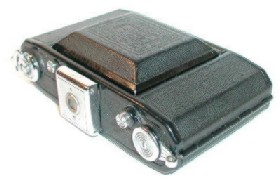
Lens folds into body and view-finder folds down.Marked " Zeiss Ikon Film B2 * 6*9" which means it uses metric film size 6 cm x 9 cm.
6 cm equates to 2-3/8 inch which is about equivalent to 2 X 2 inch format film.
9 cm equates to about 3.5 inches.
The film is about the same as used in the old Kodak Brownie Box camera.
Manual film advance and rewind on top of camer.
Death Card - An interesting piece of history from the Italian front. The "Death Card" was printed in memory of a soldier killed in combat. This link has examples for a variety of German soldiers; a couple were in the artillery and one was a mountain troop and the other was a member of the Luftwaffe infantry troops. See Death Cards.
German helmet- The Photo below is yours truly wearing the Police helmet and rows and rows of my Dad's ribbons and medals. Behind my tent, I was flying the Nazi flag that he also brought home. It is actually a banner printed on one side. "Playing Army" was really bid deal for us back then. We thought it was cool to play a dramatic death scene wearing this helmet. Most of the wear on the helmet is a result of this play-acting and not real combat. Photo was taken about 1957. (No, that is NOT a real rifle.)
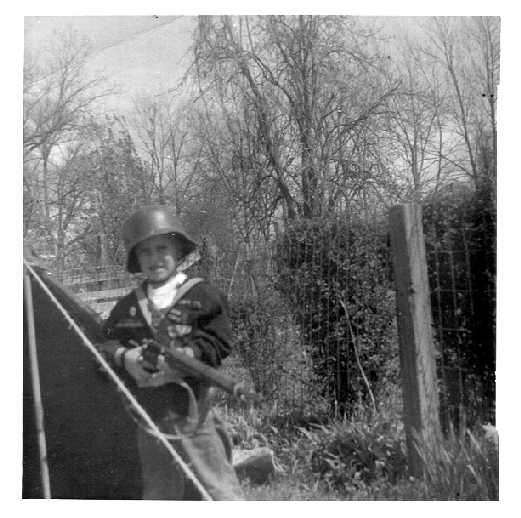
"It always remained a mystery as
to what became of the steel helmets the Jerries wore."~ quoted from "Battle Babies: 99th Division", photo caption on page 271.
---o---
My Dad said the first thing the Germans did when they surrendered was to throw away their steel helmet. They may not have done that literally, as some would attach the helmet to their belt. Many of the Photos of POW show them wearing their M-43 caps.
Photo at Right: German POWs under escort by the 85th Infantry Division in the last days of the war. All the Germans are wearing their caps. Only the GI's are wearing helmets.
Photo courtesy of Donna Tyburec.
Return to Photos from Italy top menu.
Return to 328th Field
Artillery.
| CusterMen MENU: | Italian Campaign | At The Front | Books | Armies | Maps | 85th Division | GI Biographies | Websites |